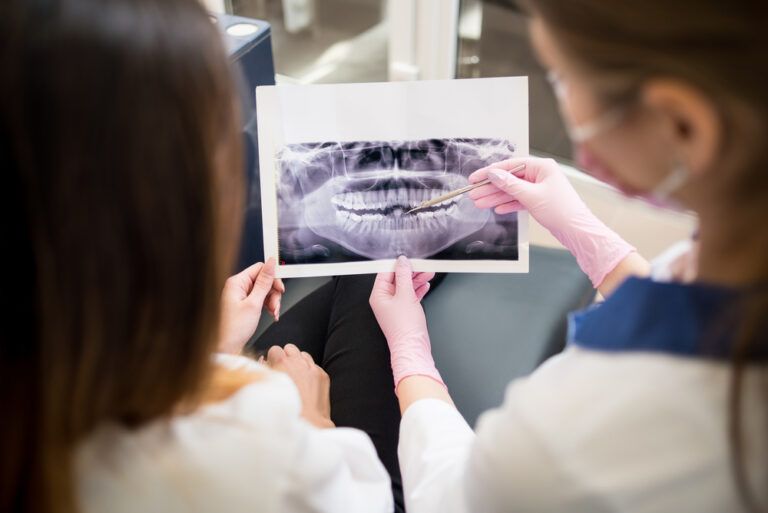Orthodontic Emergency: What to Do When Things Go Wrong

Orthodontic treatment is a journey toward a healthier, more beautiful smile. However, like any journey, it can sometimes hit a few bumps along the way. When orthodontic emergencies occur, knowing how to respond quickly and effectively can make all the difference in maintaining your progress and avoiding further complications. At Massih Orthodontics, Dr. Karmen Massih is committed to ensuring that every patient in Glendale, CA, feels confident and prepared to handle unexpected orthodontic issues.
Understanding Orthodontic Emergencies
Orthodontic emergencies are typically not life-threatening, but they can be uncomfortable, cause damage to your braces, or disrupt your treatment plan. Common orthodontic emergencies include loose brackets, broken wires, poking wires, and lost rubber bands or ligatures. Knowing the steps to take when these issues arise will help you manage the situation until you can get professional care.
1. Loose Brackets
A loose bracket is one of the most common orthodontic emergencies. Brackets can become dislodged due to eating hard or sticky foods, trauma to the mouth, or general wear and tear. A loose bracket can cause discomfort and may hinder your orthodontic progress if not addressed promptly.
What to Do: If a bracket becomes loose but is still attached to the wire, you can temporarily secure it using orthodontic wax. If the bracket has completely come off, carefully remove it and place it in a safe container to bring to your next appointment. Avoid eating hard foods until you can visit Massih Orthodontics to have the bracket reattached.
2. Broken or Protruding Wires
Broken or protruding wires can cause irritation to the cheeks, gums, or tongue. This can make eating and speaking uncomfortable. It’s important to address this issue quickly to avoid further irritation or damage to the soft tissues of your mouth.
What to Do: If a wire breaks or is poking out, try to gently push it back into place using the eraser end of a pencil or a cotton swab. If the wire cannot be repositioned, cover the end with orthodontic wax to protect your mouth. Avoid using scissors or sharp objects to cut the wire, as this can lead to injury. Contact Dr. Karmen Massih’s office as soon as possible to schedule a repair.
3. Poking Wire Ends
Sometimes, the ends of your orthodontic wires can shift and begin to poke the back of your mouth, causing discomfort. This can happen as your teeth move and the wires adjust accordingly.
What to Do: Use orthodontic wax to cover the sharp end of the wire. If wax is not available, you can try using a clean pencil eraser to push the wire back against your teeth. This is a temporary fix, so be sure to schedule an appointment with Massih Orthodontics to have the wire trimmed or repositioned.
4. Lost Rubber Bands or Ligatures
Rubber bands and ligatures play an essential role in your orthodontic treatment by helping to move your teeth into their desired positions. If one of these components is lost, it can slow down your treatment progress.
What to Do: If you lose a rubber band or ligature, try to locate it and bring it to your next appointment. If the ligature has come off but is still in your mouth, you can try to reattach it using sterile tweezers. It’s crucial to call Dr. Karmen Massih’s office to arrange for a replacement as soon as possible.
5. Discomfort After Adjustment
It’s normal to experience some discomfort after your braces are adjusted. This discomfort is a sign that your teeth are moving as intended. However, if the pain is severe or lasts longer than a few days, it may indicate a problem.
What to Do: Over-the-counter pain relievers, such as ibuprofen or acetaminophen, can help manage discomfort. Eating soft foods and using a saltwater rinse can also soothe sore areas. If the pain persists, contact Massih Orthodontics for advice on how to proceed.
6. Swallowed Parts
In rare cases, small parts of your braces, such as bands, brackets, or wires, can become loose and may be accidentally swallowed. While this can be alarming, most small parts will pass through your digestive system without causing harm.
What to Do: If you swallow a part of your braces and experience no pain or difficulty breathing, there’s usually no need for immediate concern. However, if you feel any discomfort, have trouble breathing, or think the part may be lodged in your airway, seek medical attention immediately. Once the immediate issue is resolved, contact Dr. Karmen Massih to replace the missing part and inspect your braces for any other potential issues.
Preventing Orthodontic Emergencies
While it’s impossible to prevent every potential orthodontic emergency, there are steps you can take to minimize the risk. Following your orthodontist’s advice, avoiding certain foods, and wearing protective gear during sports can go a long way in protecting your braces.
1. Avoid Problematic Foods
Hard, sticky, and chewy foods are the most common culprits when it comes to causing orthodontic emergencies. Avoiding foods like popcorn, nuts, hard candies, and chewing gum can help prevent damage to your braces. Cut fruits and vegetables into smaller pieces to reduce the risk of dislodging a bracket or breaking a wire.
2. Wear a Mouthguard
If you’re involved in contact sports, wearing a mouthguard is essential to protecting your teeth and braces. A custom-fitted mouthguard from Massih Orthodontics will offer the best protection, ensuring that your orthodontic treatment isn’t interrupted by a preventable injury.
3. Maintain Good Oral Hygiene
Keeping your teeth and braces clean is not only important for your oral health but also for the integrity of your orthodontic appliances. Plaque buildup can weaken the adhesive that holds your brackets in place, increasing the likelihood of an emergency. Brush and floss regularly, and use any recommended orthodontic tools to keep your braces in top condition.
How to Stay Prepared for Orthodontic Emergencies
Being prepared is the best way to manage any orthodontic emergency that comes your way. Keeping a small orthodontic emergency kit on hand can make all the difference in managing minor issues until you can see Dr. Karmen Massih. Your kit should include:
- Orthodontic wax
- A small mirror
- Sterile tweezers
- A pencil eraser
- Over-the-counter pain relievers
- A small container to store any loose parts
Additionally, keep Massih Orthodontics’ contact information readily available. Knowing when to seek professional help is crucial for preventing small problems from becoming bigger ones.
Final Thoughts on Managing Orthodontic Emergencies
Orthodontic emergencies can be inconvenient and uncomfortable, but with the right knowledge and preparation, you can manage them effectively. By understanding what to do when things go wrong, you can protect your investment in your smile and ensure that your orthodontic treatment stays on track. Remember, Dr. Karmen Massih and the team at Massih Orthodontics in Glendale, CA, are here to support you every step of the way.
Sources:
- Graber, T. M., Vanarsdall, R. L., & Vig, K. W. L. (2016). Orthodontics: Current Principles and Techniques. Elsevier.
- Proffit, W. R., Fields, H. W., & Sarver, D. M. (2018). Contemporary Orthodontics. Elsevier.
- Ngan, P., & Huang, G. J. (2019). Treatment of Class II Malocclusion in the Mixed Dentition. Seminars in Orthodontics.

Recent Comments